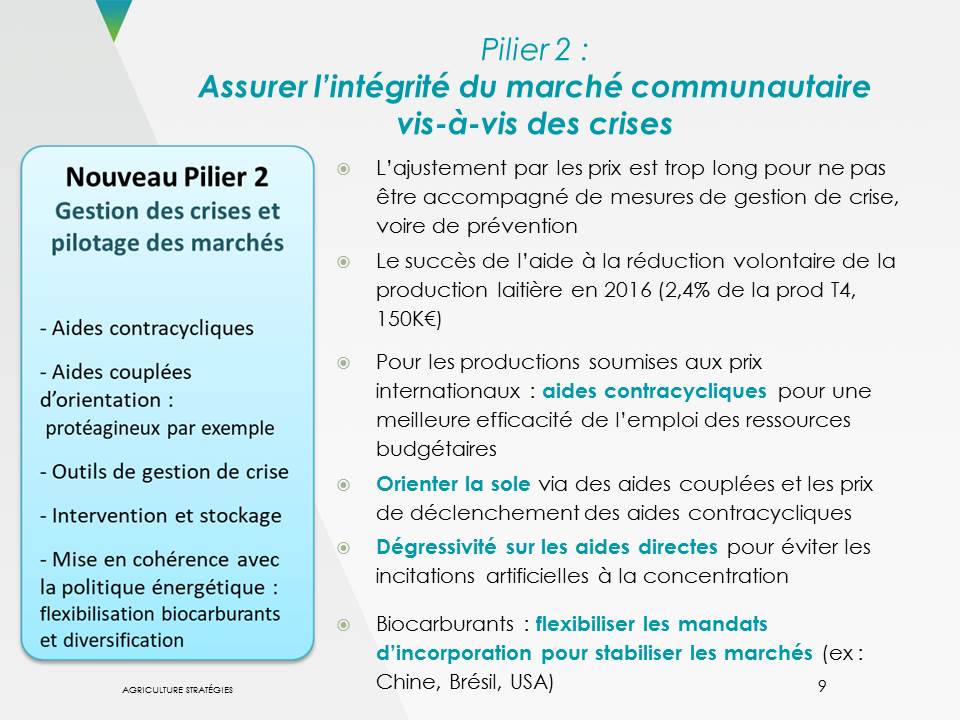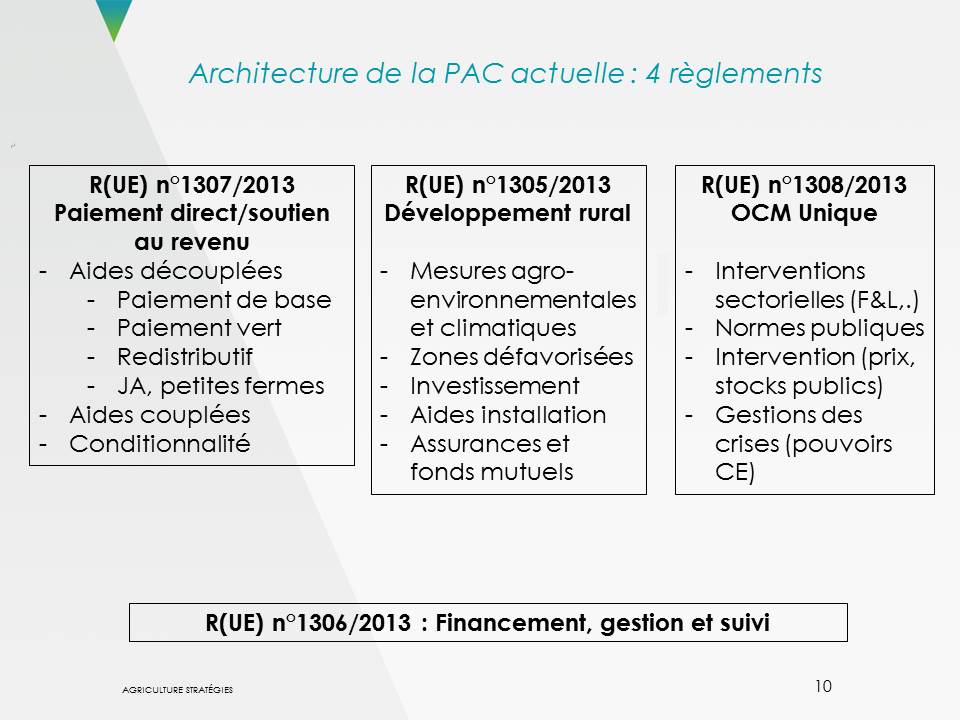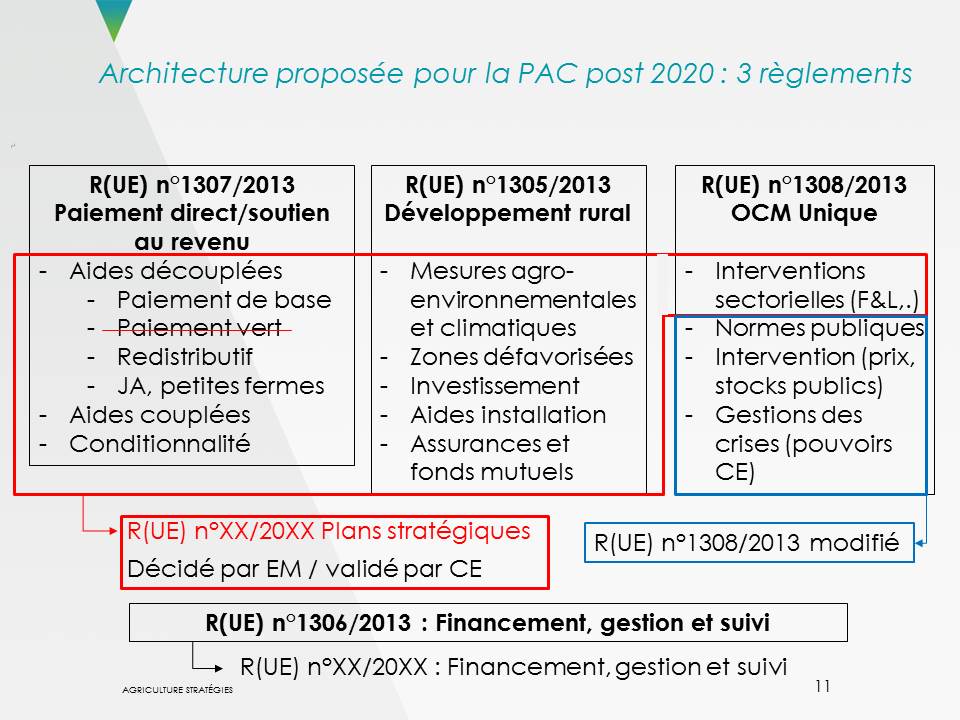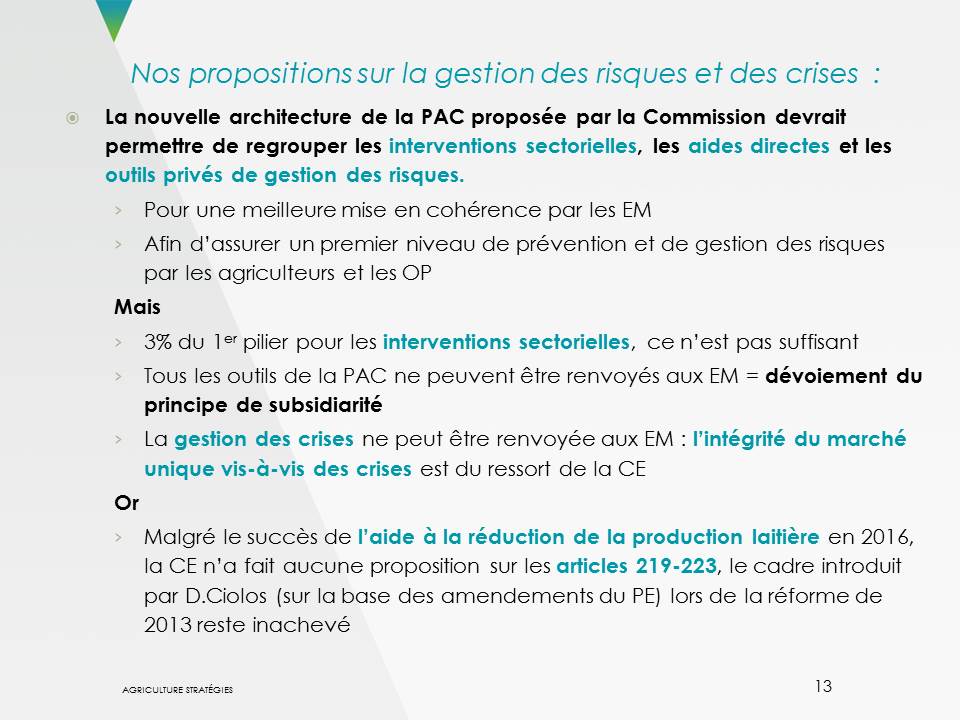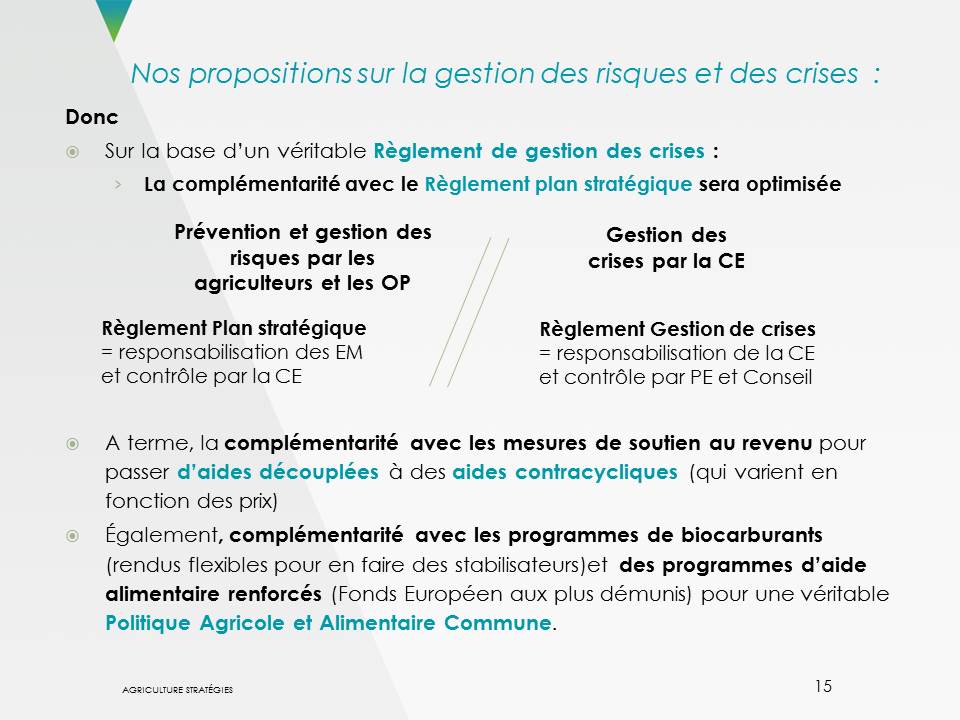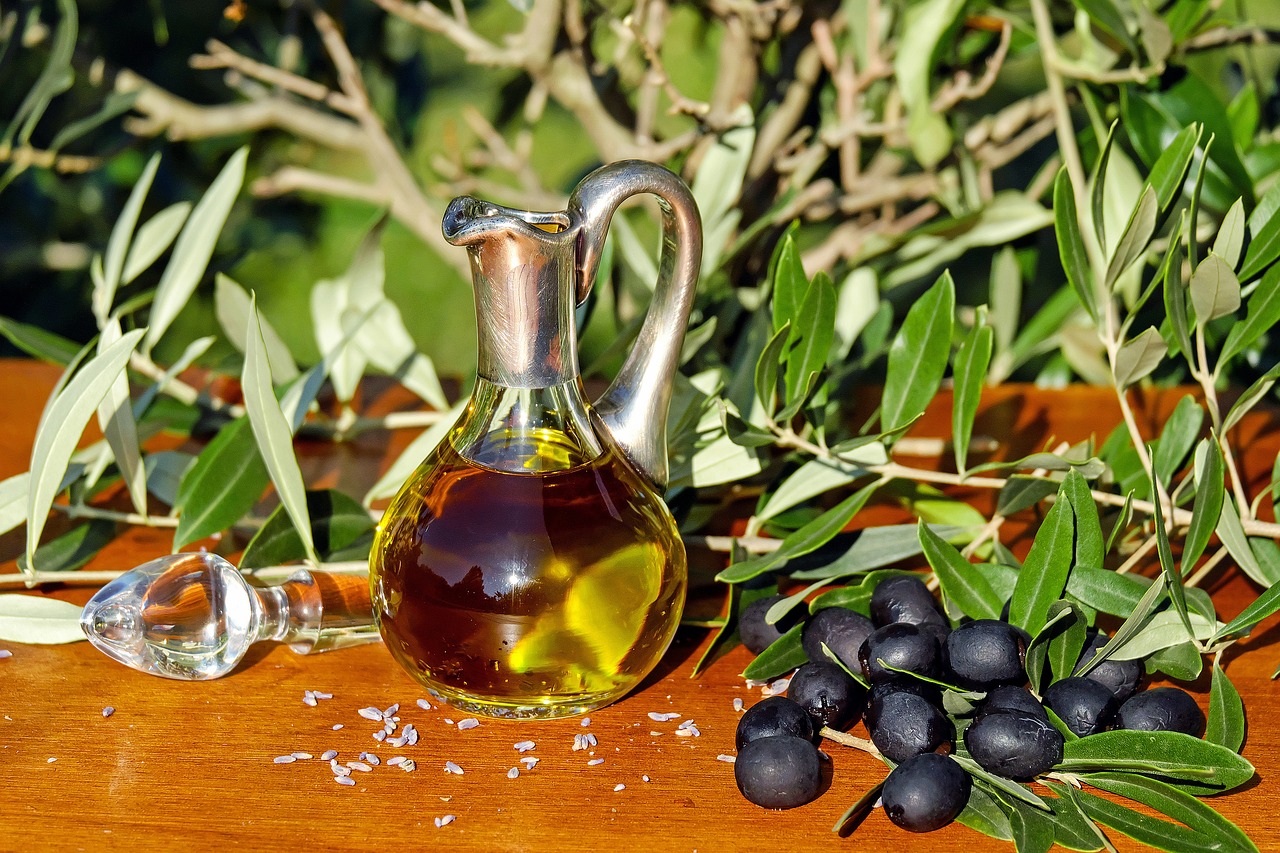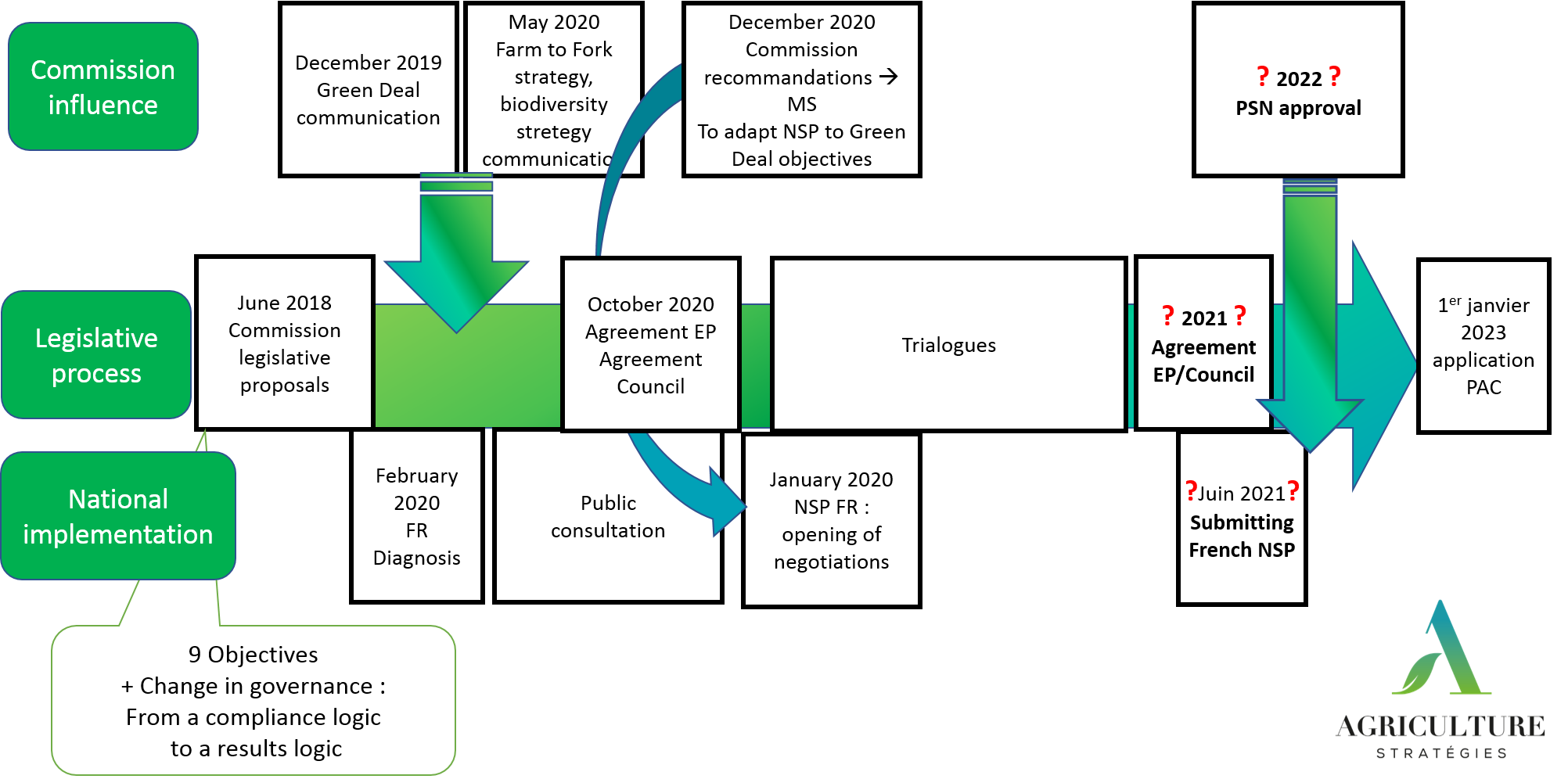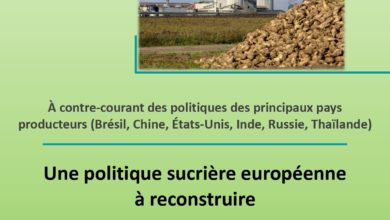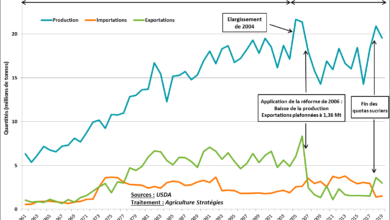
Last October 9th, Jacques Carles, President of Agriculture Strategies, was interviewed by the Agriculture and Rural Development Committee at the European Parliament during a session on the “Future of the Common Agricultural Policy”. We reproduced below the support slideshow of his intervention and explained the main associated messages.
 Designing the future of the CAP requires paying the greatest attention to the evolution of agricultural and food policies in the world and especially among the major agricultural powers. Indeed, there is evidence of widespread strengthening of agricultural policies, particularly in response to the 2007/08 food crisis. As can be seen in the graph representing the estimate of total support to agriculture and food as calculated by the OECD (in this version we take into account all US food aid budgets) , the support increases significantly over the period especially in the United States and China.
Designing the future of the CAP requires paying the greatest attention to the evolution of agricultural and food policies in the world and especially among the major agricultural powers. Indeed, there is evidence of widespread strengthening of agricultural policies, particularly in response to the 2007/08 food crisis. As can be seen in the graph representing the estimate of total support to agriculture and food as calculated by the OECD (in this version we take into account all US food aid budgets) , the support increases significantly over the period especially in the United States and China.
Per capita, the Total Support Estimate (TSE) provides an interesting basis for comparison. Canada, Brazil or Australia are far from having negligible supports. Russia has significantly strengthened its agricultural policy since the mid-2000s. Finally, China has a TSE per capita very close to that of the European Union, even though the standard of living of Chinese is 3 times lower than ours!
It is not a question of denouncing this evolution, on the contrary! The European Union must rethink its agricultural policy with the awareness that it is the only one to believe in the martingale of the decoupling of aid.
 The Commission’s proposal for the Multiannual Financial Framework 2021/27 would lead to a drastic cut in the CAP budget. Far from the 5% cleverly presented because expressed in current euros, it is a decrease of more than 28% over 20 years (between 2007 and 2027) towards which one would move if the CFP was accepted in the state. A counter-current position of all the agricultural powers that strengthen their support for agriculture!
The Commission’s proposal for the Multiannual Financial Framework 2021/27 would lead to a drastic cut in the CAP budget. Far from the 5% cleverly presented because expressed in current euros, it is a decrease of more than 28% over 20 years (between 2007 and 2027) towards which one would move if the CFP was accepted in the state. A counter-current position of all the agricultural powers that strengthen their support for agriculture!
Beyond the announced decrease in the budget (-15% in constant euros compared to current programming, of which 25% on the second pillar), Commissioner Hogan’s proposals for the CAP are not up to the challenges and s are part of a logic of renationalisation that is prejudicial not only to the CAP but to the European project itself. The Commissioner is making a dangerous bet: by referring as much as possible to subsidiarity to hope for a quick political agreement on the lowest common denominator, he opens the door to a complete renationalisation of the main Community policy.
This proposal is in line with the previous ones: decoupled aid remains at the heart of the CAP, whereas the recent US attack on Spanish table olives, considering that decoupled aid is a distortionary support, shows that that this type of aid is on the selette. The EU is the only one to want to reconsider the rules of the WTO in terms of domestic support, can we be right long alone against all?
Admittedly, important latitudes are already given to the Member States, but going further, especially on environmental standards, will inevitably lead to a race to the bottom. In addition, we are in a single market, crisis management can not be sent back to the Member States: it is up to the Commission to ensure the integrity of the European market in the face of crises.
Proposing to extend the logic of “sectoral interventions” currently in use, especially for Fruits and Vegetables is a good thing as it is necessary to empower producers in marketing. Farmers and producer organizations must be empowered to provide a first level of regulation to manage the risks within their reach. But the ceiling of 3% of the first pillar envelope for the new sectors seems far too restrictive.
Finally, while the aid to the reduction of milk production was the main success of the Commission during this term, no proposal is made to specify and improve the framework at work in terms of management tools. crisis. The only change is the crisis reserve, which will no longer be subject to a direct aid levy and whose unused amounts can be carried over from one year to the next.

One thing is clear: agricultural markets are not efficient, prices do not fluctuate regularly around the equilibrium level, agricultural markets are marked by cycles where brief peaks consecutive to tensions over food security leave room. at long lows because, faced with low prices, farmers have no interest in reducing their production individually. In agriculture, price adjustment is all the longer because it is painful. This is the primary justification of agricultural policies!
Under these conditions, the performance of private risk management instruments (insurance, mutual funds, futures markets) will still be insufficient: faced with permanently depressed markets and / or poor price formation, these tools are of no avail.
Decoupled aids are completely ineffective: they are not needed in the case of fat cows and are not enough in lean times, but they are easily captured by the economic environment of the farmers and therefore do not benefit them. Europe is the only one to continue to believe in the martingale of decoupling. The questioning by the USA of the undistorted nature of decoupled aid in the Spanish olive business poses a serious problem for the defender of the CAP’s current trajectory.
Finally, in terms of the environment, the current direction of Europe is to be completely revised. The greening of the aid had no positive impact on the environment, as pointed out by the European Court of Auditors. This is a greenwashing attempt that the Commission is proposing again behind the “eco-device” in order to maintain the status quo of the decoupling of aid. Environmental NGOs now agree more and more: without improving the economic situation of farmers, progress on the environment will remain low.
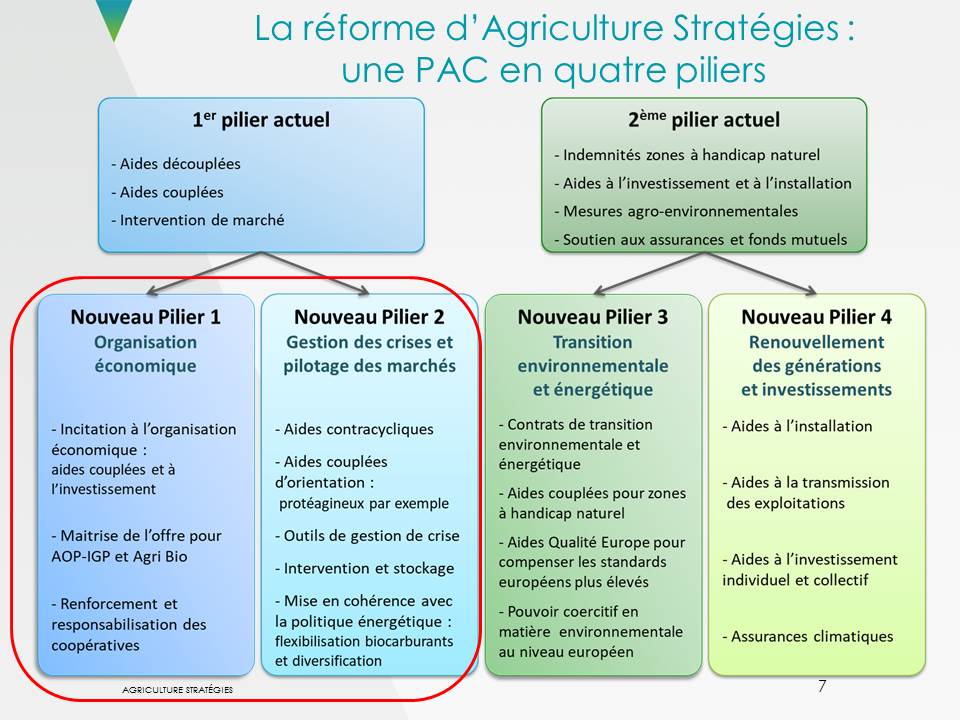 Faced with these findings, Agriculture Strategies proposes an in-depth reform of the CAP. We will only detail the first two parts here, but you can refer to our Strategic Reference Note1. It seems to us essential to improve the economic organization of producers so that they can ensure a first level of prevention and risk management especially in economic matters. But as important as it is, this first level can not be self-sufficient. It must be complemented by a second level of crisis management to be assumed by the Community level, which guarantees the integrity of the single market.
Faced with these findings, Agriculture Strategies proposes an in-depth reform of the CAP. We will only detail the first two parts here, but you can refer to our Strategic Reference Note1. It seems to us essential to improve the economic organization of producers so that they can ensure a first level of prevention and risk management especially in economic matters. But as important as it is, this first level can not be self-sufficient. It must be complemented by a second level of crisis management to be assumed by the Community level, which guarantees the integrity of the single market.
Our new first pillar would bring together all measures relating to the economic organization of operators in the sector. The challenge of better sharing of value added within the sectors is central. It goes through a better organization of producers (OP) in order to rebalance market powers. But, concretely, it is above all the collective capacity of producers to manage their marketing that matters.
This is seen in the Fruit and Vegetable and Wine sectors, where instead of decoupled support, these sectors have had the foresight to maintain distinct support regimes that are now shown as examples. With investment aids but also coupled aid can encourage a better organization of producers.
In addition, we propose to extend to all production under quality regime and to organic farming, the possibility that cheese and ham producers currently have to organize to master the offer. Each company constantly seeks to adjust its offer, it must be at the heart of the action of POs and in particular the cooperatives that constitute the most successful status among FOs and also the most common.
The second pillar concerns the steering of the Community market and crisis management. Aid for the reduction of milk production in 2016 was effective in getting out of the crisis, although it should have been implemented earlier to avoid the formation of powder stocks that continue to weigh on prices.
In addition to the prevention and risk management of better-organized producers, public authorities must ensure the integrity of the market with regard to crises, and in the single market it is the Community level that is best able to do it. The agricultural markets are marked by irregular cycles and frequent crises, it is necessary to emerge a real countercyclical management of markets and incomes.
In particular, for productions subject to international price fluctuations (milk, cereals, sugar, etc.), counter-cyclical assistance is the most effective and efficient tool in addition to crisis management measures. The use of coupled aids must also make it possible to go beyond the current logic where it is a question of helping sectors in difficulties to make them more structural tools of orientation of the productions, in particular to rebalance a ratio oil / cereals that is unsatisfactory for the environment.
With the end of export subsidies, the Union must be able to manage these crises of overproduction internally. Traditional intervention tools (public storage) must remain the safety net of last resort, before which other crisis management measures will have to be used.
Finally, we must move beyond the logic of the silos and assume again biofuels as a component of agricultural policy. By flexibilizing biofuel incorporation mandates, food uses are prioritized over non-food uses and this outlet is used as a stabilizer for agricultural markets. In both cases, it is more food security and more consistency in EU policies.
To return to the current reform, we think it is important to focus on crisis management in the short term. Most of the necessary tools are already present in the CMO Regulation: the Commission has significant powers of intervention but it must have a framework to evaluate its performance and respond to crises as to its lack of responsiveness.
The current CAP is based on 4 regulations: Direct payments / Rural development / Single CMO / Horizontal.
The Commission proposes to redraw the CAP into three regulations: the first defines the room for maneuver of the Member States (Strategic Plans), the second that of crisis management and public standards (CMO) and the third the financial rules, management and tracking (Horizontal).
The Commission’s proposal aims to consolidate the “Direct Payments”, “Rural Development” and part of the CMO regulations into the new “Strategic Plans” Regulation. Thus this new regulation would concentrate all the provisions that each State will have to make, subject to acceptance by the Community level. It is very likely that this step will bring about the renationalisation of the CAP, which seems to us to be a great danger both for Europe and for our agriculture.
In addition to this new regulation, the other two regulations are also affected by the reform, although the Commission has not made any major proposals.
We therefore think it is important for Parliament to fully address the issue by reinforcing the CMO Regulation with the essential function of crisis management, which would otherwise be at the level of each Member State, thereby removing the Community responsibility in the event of a crisis.
In the long term, it is essential to go further and to integrate into food and environmental crisis management significantly enhanced food aid and the biofuel policy to use this market more flexibly to stabilize markets.
Especially in the direction of a better control of the markets in the face of crises, it seems obvious that a large part of the direct aids should become counter-cyclical and come to supplement the measures of crisis management. The CAP would recover the Community added value and efficiency it lost with decoupling. With a policy mix combining budgetary measures and market management measures, the Commission would then have all the means at its disposal to ensure countercyclical steering of markets and agricultural incomes.
With this new architecture, the Member States could therefore improve the organization of producers and enable them to ensure a first level of prevention and crisis management.
Our proposals are thus summarized as follows:
- Increasing the first pillar envelope beyond 3% for sectoral interventions in sectors currently not eligible is not sufficient. The Commission pretends to want to transfer the entire CAP to the Member States: this would be a deviation from the principle of subsidiarity because crisis management can not only be at Community level.
- Putting crisis management at the heart of the CAP by making the CMO Regulation a crisis management regulation grouping public standards (GI, quality, etc.), market intervention tools (public stocks), crisis measures (Arts 219 to 223). Because despite the success of the aid to the reduction of milk production in 2016, the Commission made no proposal on Articles 219-223 of the CMO Regulation introduced by Commissioner Ciolos on the basis of Parliament’s amendments at 2013 reform. In the medium term, we would find in this set the countercyclical aid.
- Making Articles 219 to 223 more effective in order to encourage the Commission to be more responsive and therefore more efficient because a market crisis is all the more costly to deal with when it has had time to set up.
- Impose on the Commission to define its logic of action and its performance framework. No doctrine has been established to define the different types of crises, and the evaluation obligations that any management authority must meet are far from being respected. Because, in the absence of the definition of the Commission’s logic of action with regard to crisis management, how could the Member States be able to define their strategy of action with regard in particular to farm incomes?
In conclusion, the complementarity between strategic plans and crisis management remains to be built and the Parliament must be force of proposal. Crisis management can only be the responsibility of the Community level because it is a question of ensuring the integrity of the single market. On the basis of a performance framework, the Commission will be able to report to Parliament and the Council on its choices and use of Community funds.
Link to the slideshow : https://www.agriculture-strategies.eu/wp-content/uploads/2018/10/181009-presentation-JCArles-ComAgri.pptx
Link to the video (14:49:37) : http://www.europarl.europa.eu/ep-live/fr/committees/video?event=20181009-1430-COMMITTEE-AGRI
1 https://www.agriculture-strategies.eu/wp-content/uploads/2018/06/Note_Reference_Strategique_Consensus_Reforme_PAC_250518-1.pdf





